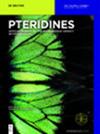FOLR1在卵巢癌中的表达、功能富集、相关信号通路及其与预后关系的生物信息学分析
IF 0.9
4区 医学
Q4 BIOCHEMISTRY & MOLECULAR BIOLOGY
引用次数: 3
摘要
摘要目的探讨叶酸受体1(FOLR1)在癌症中的表达及其与预后的关系。方法利用TCGA和Oncomine数据库收集多发癌组织中FOLR1mRNA表达的数据。比较卵巢癌症样品和相应的邻近正常卵巢组织中FOLR1mRNA的表达水平。使用FOLR1和相关基因的STRING数据库构建了蛋白质-蛋白质相互作用(PPI)网络。用log-rank检验比较高和低FOLR1表达组卵巢癌症患者的总生存率(OS)和无进展生存率(PFS)。本研究纳入了66例卵巢上皮癌样本,并通过免疫组织化学方法检测了66例肿瘤样本中FOLR1蛋白的表达。结果卵巢癌症组织中FOLR1mRNA表达明显高于其他组织。结论卵巢上皮性癌症组织中FOLR1mRNA表达明显高于相应的正常组织(P<0.05)。本文章由计算机程序翻译,如有差异,请以英文原文为准。
Bioinformatics analysis of FOLR1 expression, functional enrichment, related signaling pathways and relationship with prognosis in ovarian cancer
Abstract Objective To investigate folate-receptor 1 (FOLR1) expression in ovarian cancer and its association with patient prognosis. Methods TCGA and Oncomine databases were used to collect data about FOLR1 mRNA expression in multiple carcinomas. FOLR1 mRNA expression levels in ovarian cancer samples and corresponding adjacent normal ovary tissue were compared. A protein-protein interaction (PPI) network was constructed using the STRING database of FOLR1 and relevant genes. The overall survival (OS) and progression free survival (PFS) rates of ovarian cancer patients in high- and low- FOLR1 expression groups were compared by log-rank test. Sixty-six ovarian epithelial carcinoma samples were included in the study, and tumor specimens of the 66 cases were tested for FOLR1 protein expression by an immunohistochemistry assay. Results FOLR1 mRNA was significantly elevated in ovarian cancer compared to other carcinomas. FOLR1 mRNA expression levels were significantly higher in tumor tissues than in the corresponding normal tissues (P<0.05) of ovarian cancer patients. The PPI network indicated that the local clustering coefficient was 0.898, indicating that the PPI network was enriched significantly (P<0.05). The median PFS values were 22.39 and 19.00 months for lowand high-FOLR1 expression groups, respectively, with significant statistical difference between the two (HR=1.26, 95%CI:1.09-1.45, P<0.05). FOLR1 protein expression was correlated with tumor differentiation (P<0.05) in ovarian cancer patients. However, its levels were not correlated with patient age, tumor diameter, lymph node metastasis or FIGO stage (P>0.05). Conclusion FOLR1 is upregulated in epithelial ovarian cancer, and its expression is correlated with patients’ progression free survival, making it a valuable biomarker for prognosis.
求助全文
通过发布文献求助,成功后即可免费获取论文全文。
去求助
来源期刊

Pteridines
生物-生化与分子生物学
CiteScore
1.20
自引率
25.00%
发文量
6
审稿时长
>12 weeks
期刊介绍:
Pteridines is an open acess international quarterly journal dealing with all aspects of pteridine research. Pteridines are heterocyclic fused ring compounds involved in a wide range of biological functions from the color on butterfly wings to cofactors in enzyme catalysis to essential vitamins. Of the pteridines, 5,6,7,8-tetrahydrobiopterin is the necessary cofactor of several aromatic amino acid monoxygenases, the nitric oxide synthases and glyceryl ether monoxygenase (GEMO). Neopterin plays an essential role in the immune system and is an important biomarker in laboratory medicine for diseases such as HIV, cardiovascular disease, malignant tumors, among others.
Topics:
-Neopterin, dihydroneopterin, monapterin-
Biopterin, tetrahydrobiopterin-
Folates, antifolates, riboflavin-
Phenylalanine, tyrosine, phenylketonuria, serotonin, adrenalin, noradrenalin, L-DOPA, dopamine, related biogenic amines-
Phenylalanine hydroxylase, tyrosine hydroxylase, tryptophan hydroxylase, nitric oxide synthases (iNOS), alkylglycerol monooxygenase (AGMO), dihydropterin reductase, sepiapterin reductase-
Homocysteine, mediators of inflammation, redox systems, iron.
 求助内容:
求助内容: 应助结果提醒方式:
应助结果提醒方式:


